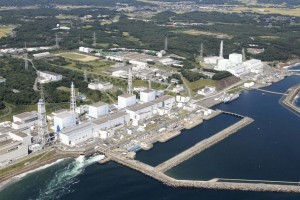The owners of the Fukushima I Nuclear Power Plant, announced this week that the situation in the power station – which went into meltdown as long ago as March 2011, following the Tōhoku earthquake and tsunami – is becoming increasingly dangerous.
The situation has taken a turn for the worse as radiation levels in groundwater have suddenly soared, suggesting highly toxic materials from the plant are now close to the Pacific Ocean.
Tokyo Electric Power Co [Tepco], the operator of the Fukushima station, said that an observation well between the sea and damaged reactor No. 2 showed levels of radioactive caesium-134 were 90 times higher last Monday than they had been the previous Friday.
Tepco said it detected caesium-134 at 9,000 becquerels per litre, 150 times above Japan’s safety standard. A becquerel is a measure of the release of radioactive energy.
Meanwhile the reading for caesium-137, with a “half life” of 30 years, was some 85 times higher than it had been three days earlier.
The latest findings, 25 metres from the sea, come a month after Tepco detected radioactive caesium in groundwater flowing into its wrecked plant far from the sea on elevated ground. The level of caesium found in June was much lower than the amount announced on Tuesday.
The increase suggests that highly contaminated water is spreading toward the sea side of Fukushima from the reactors sitting on higher ground.
“We don’t know what is the reason behind the spike,” Tepco spokeswoman Mayumi Yoshida told the news agency Reuters. “We’re still looking to determine the causes behind it.”
Tepco has been flushing water over the reactors to keep them cool for more than two years, but contaminated water has been building up at the rate of an Olympic-size swimming pool per week.
The Fukushima incident is credited as being the world’s worst nuclear disaster after that at Chernobyl in 1986. This week’s news of the situation worsening comes at the same time as Japan’s Nuclear Regulation Authority announced the possibility of reactivating some of Japan’s 50 idle nuclear reactors within the next year. The decision has been met with scepticism from the Japanese public.










